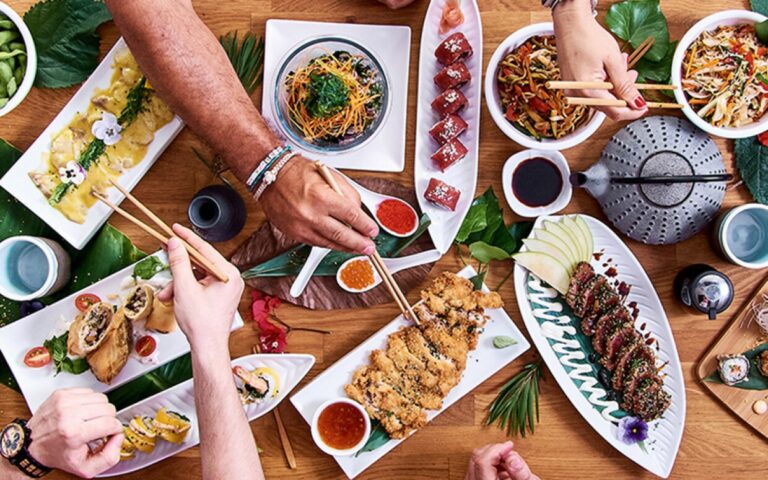Introduction: Exploring Japanese Cuisine
Japanese cuisine is renowned for its delicate and intricate flavors, presentation, and attention to detail. It is a cuisine that has been developed over centuries and has become one of the most popular and influential cuisines in the world. Japanese cuisine is based on fresh, seasonal ingredients, and the use of unique flavors and techniques that are not commonly found in other cuisines.
The Role of Umami in Japanese Cooking
Umami is considered the fifth taste and is a distinctive flavor that is commonly found in Japanese cuisine. It is a savory flavor that is often described as meaty, brothy, or savory. Umami is found in a number of ingredients such as dashi, soy sauce, miso, and bonito flakes. It is also present in foods such as mushrooms, meats, and seaweed. The use of umami in Japanese cooking is what gives it its distinctive flavor profile and sets it apart from other cuisines.
Unique Ingredients in Japanese Cooking
Japanese cuisine uses a variety of unique ingredients such as shiso leaves, yuzu citrus, and wasabi. Shiso leaves are used in a variety of dishes and are known for their unique flavor and aroma. Yuzu citrus is a type of Japanese citrus fruit that is used in a variety of dishes such as sauces, marinades, and dressings. Wasabi is a pungent root that is similar to horseradish and is commonly used as a condiment for sushi.
Flavors that Stand Out in Japanese Dishes
Japanese cuisine is known for its delicate and subtle flavors that are designed to enhance the natural flavors of the ingredients. Some of the flavors that stand out in Japanese dishes include soy sauce, mirin, and sake. Soy sauce is a staple ingredient in Japanese cuisine and is used to add depth and complexity to dishes. Mirin and sake are both types of rice wine that are used to add sweetness, acidity, and umami to dishes.
Traditional Japanese Seasonings and Sauces
Japanese cuisine is renowned for its traditional seasonings and sauces such as miso, soy sauce, and sake. Miso is a fermented soybean paste that is used to add depth and richness to soups, stews, and marinades. Soy sauce is a staple ingredient in Japanese cuisine and is used in a variety of dishes such as sushi, tempura, and teriyaki. Sake is a type of rice wine that is used in a variety of dishes such as sauces, marinades, and dressings.
Modern Japanese Cuisine: Fusion and Innovation
In recent years, Japanese cuisine has evolved to include fusion and innovative dishes that incorporate elements from other cuisines. Fusion dishes such as sushi burritos and ramen burgers have become increasingly popular in Japan and around the world. Chefs are also experimenting with new ingredients and techniques to create innovative dishes that push the boundaries of traditional Japanese cuisine. Despite these changes, the core principles of Japanese cuisine remain the same – using fresh, seasonal ingredients and creating dishes that are both beautiful and delicious.

